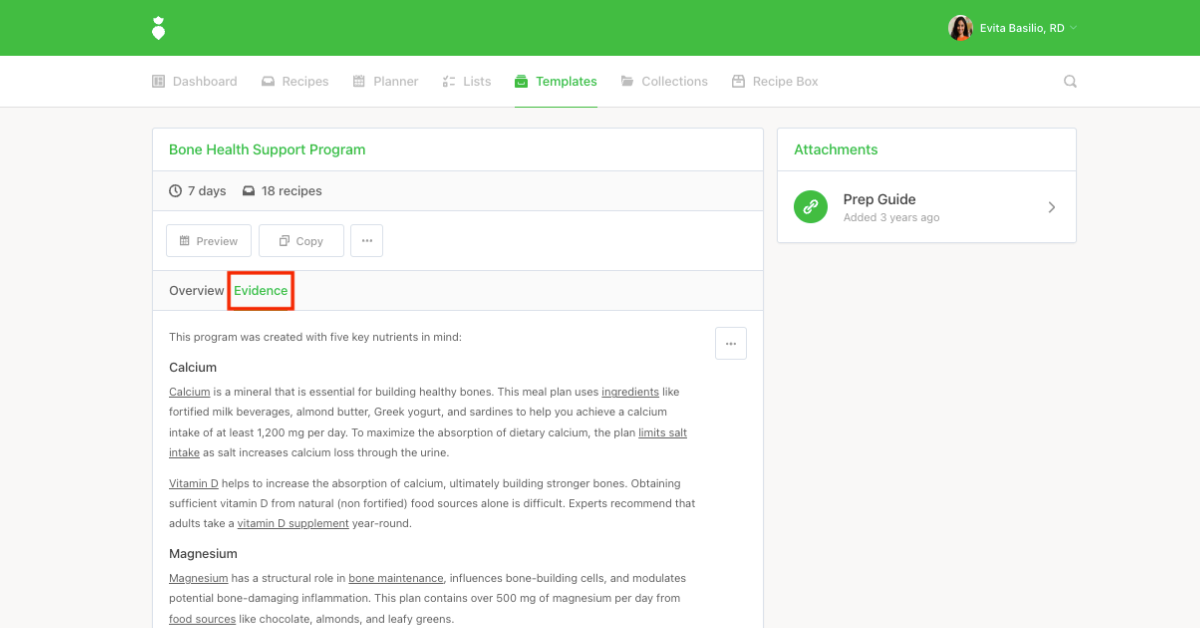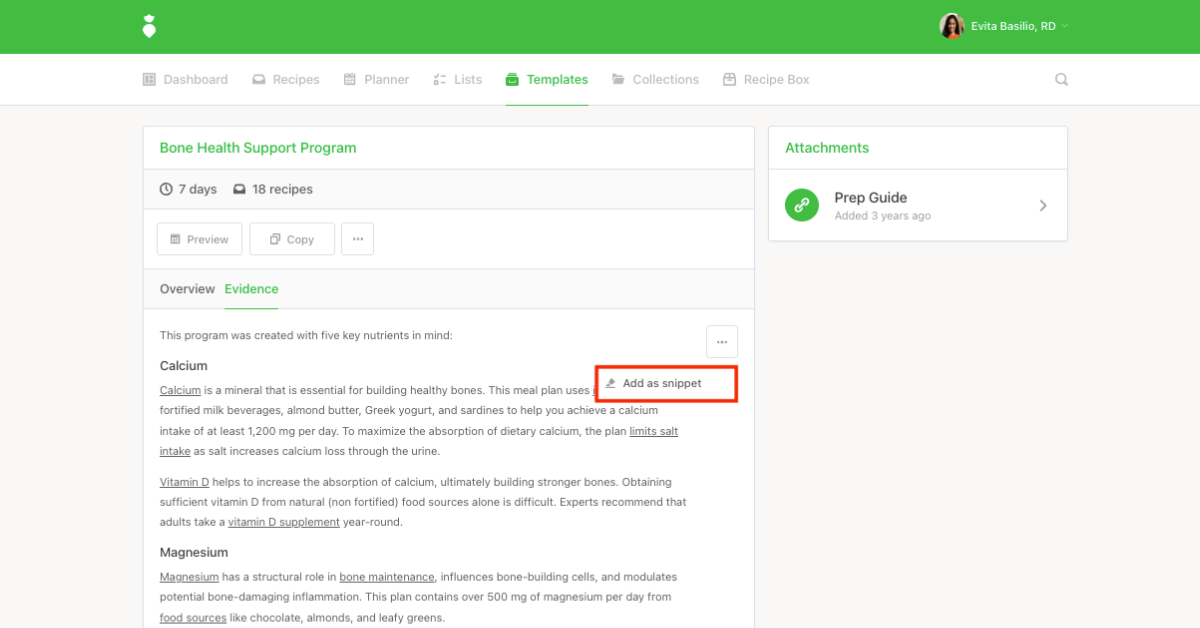Research shows that meal planning helps clients follow nutrition guidelines, eat a variety of foods, and stay on track with their health and fitness goals. Meal planning is even more effective when practitioners also empower their clients with knowledge of their unique nutrition needs.
There are many reasons why clients don’t follow nutrition plans as advised, which can include not understanding the reason behind recommendations and not believing the plan will work. Using evidence to support your nutrition plans can help overcome these problems and improve client outcomes.
Why Use Scientific Evidence in Your Practice?
Evidence-based practice combines research evidence, clinical expertise, and the client's values and circumstances to provide client-centered care.
In today’s digital age, consumers have access to a lot of misinformation and pseudoscience relating to nutrition. Nutrition research varies in type and quality and is often too complex for the public to understand. As a health professional, you are in a position to translate the science of nutrition into practical solutions for healthy living and meal planning.
When clients can understand the reason behind the diet recommendations in their nutrition plans, they are more likely to follow through. Taking an evidence-based approach benefits you and your clients by...
- Improving success rates in client outcomes and better adherence to nutrition plans.
- Expanding your clinical expertise, credibility, and knowledge of disease mechanisms.
- Improving client understanding and trust in the process you are recommending.

How to Find the Best Evidence
For a health professional’s information and advice to be trusted, there must be credibility in the conduct and quality of the research, and in the accuracy of interpretation and translation of that research. You must critically evaluate nutrition research, understand its strengths/limitations, identify potential sources of bias, and accurately communicate its results/implications.
To locate the best evidence, limit your search to publication types with higher levels of evidence, such as systematic reviews, meta-analyses, randomized controlled trials, and practice guidelines. Since medical information can quickly become outdated, aim to review the most recent evidence available. It is important to critically appraise evidence before using it to inform your clinical decision making. The three major aspects of evidence that you need to critically appraise are:
- Validity: can you trust it?
- Impact: are the results clinically important?
- Applicability: can you apply it to your client?
How to Translate & Communicate Scientific Research with Clients
Translating nutrition research involves speaking and writing more plainly to help your clients understand a complex scientific concept.
When your client understands the messages they receive about their health, they are more likely to be successful in following a nutrition plan and take steps toward behavior change and a healthier lifestyle.
Here are ways to get started on knowledge translation:
1. Interpret evidence and research from a neutral point of view, without inserting personal bias.
Bias can distort results, exaggerate or misrepresent study findings, and make your information less reliable.
2. Understand your client’s needs.
Start by conducting a Meal Planning Assessment to collect relevant data before building your evidence-based meal plan.
3. Consider literacy, culture, and language in nutrition communication.
This will determine how you choose to communicate the research and provide education. Aim to provide information that is easy to understand, culturally relevant, and translated in the native language of clients with limited English proficiency.
4. Choose the appropriate education tool.
Based on your client’s health literacy and learning style, find the best format to provide nutrition education such as written, audio, or video format and a suitable setting such as individual counseling or a group program.
5. Make it clear and concise.
Limit the number of messages taught at one time, use simple, jargon-free language, and define technical terms.
6. Make it applicable.
Give your clients realistic and tangible options for making dietary changes by providing the health-related goal, rationale, and method to implement. For example, increase your physical activity to improve your good cholesterol by aiming to do 30 to 60 minutes of activity per day.
Where Do I See the Evidence for That Clean Life Templates?
We provide evidence for our Templates based upon the latest research, protocols, and plan composition. For example, here's our Bone Health Program, the key nutrients we focused on backed by research:

To view the research associated with a pre-made program, simply login to That Clean Life, view our Templates, and click on the "Evidence" tab.
This evidence can be used to support your client's meal plan by turning it into a snippet and including it as a client brief. Learn more here.

If you are already a member of That Clean Life, you are ready to start implementing evidence to support your meal plans right away. Log in and get to work!
If you are not yet a member of That Clean Life, you can learn more and sign up here.

